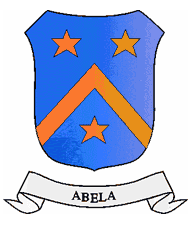Giovanni Francesco Abela
Giovanni Francesco Abela (1582–1655) was a Maltese noble who in the early 17th century wrote an important work on Malta, Della Descrittione di Malta isola nel Mare Siciliano: con le sue antichità, ed altre notizie, "description of Malta, island in the Sicilian sea, with its antiquities, and other information".


Abela was born in Valletta to Marco Abela and Benarda Vella[1] whose great great grandfather was Barone di Pietra Lunga and whose ancestors ruled Malta on more than one occasion and were part of the royal family of Spain.
Malta illustrated is still an important source of first-hand information on a number of subjects of Melitensia, such as folklore, placenames, the Maltese language, history of Malta and archaeology. His description of the Maltese Islands was translated into Latin by G.A. Seinero in 1725, Latin being the universal language of science and culture of that time. This translation was incorporated in Johann Georg Graevius Thesaurus antiquitatum et historiarum Italiae.
He became Auditor of Grand Master Antoine de Paule, Chaplain and finally Vice Chancellor of the Knights Hospitaller. He is also remembered as the promoter of the first Notarial Archives for Malta.
Gian Francesco Abela visited archaeological sites on the islands and made some valuable observations. He appears to have been the first to note that the ancient temple of Hercules was to be identified with the remains on the hill at Tas-Silġ rather than those of Borġ in-Nadur. At Tas-Silġ he observed foundations and courses of stones ‘ben lavorate e messe insieme,’ and in support of his identification he recorded the discovery of ‘medaglie, pezzi di statue d’idoletti, e d’altre cose, minimi avanzi di quella vana gentilità e falsa religione, quivi ritrovate sotto il Magistero del Principe Wignacourt, mentre alcuni nell’istesso luogo cavando, scioccamente pensavano far acquisto di ricco tesoro.’[2]
In the early 17th century Abela converted his house at Marsa to a historical museum, the first in Malta. Many of its artefacts are now stored in Malta's National Museum of Archaeology.[3]
He is buried in the Chapel of Our Lady of Philermos (today the Chapel of the Blessed Sacrament) in Saint John's Co-Cathedral in Valletta. The Junior College in Msida is named after Abela.
Publications
- Abela, Giovanfrancesco (1647). Della Descrittione di Malta isola nel Mare Siciliano: con le sue antichità, ed altre notizie. Malta: Paolo Bonacota.
See also
References
- Ciantar, Giovannantonio (1772). "Malta illustrata". 1–2. Stamperia del Palazzo di S.A.S. MDCCLXXII, by Giovanni Mallia: vij.
{{cite journal}}: Cite journal requires|journal=(help) - Abela, Giovanni Francesco (1647). Della Descrizione di Malta Isola nel Mare Siciliano con le sue Antichità, ed Altre Notizie (in Italian). Paolo Bonacota. p. 5.
- Marsa Local Council - Town at a Crossroad: History of Marsa Archived 2011-07-14 at the Wayback Machine
- Anthony Bonanno (1983) Giovanni Francesco Abela's legacy to the Jesuit college
- James Abela (2006) Abela Family Tree
- Chiara Cecalupo, Giovanni Francesco Abela. Work, private collection and birth of Christian archaeology in Malta, Roma, Quasar Ed., 2020.